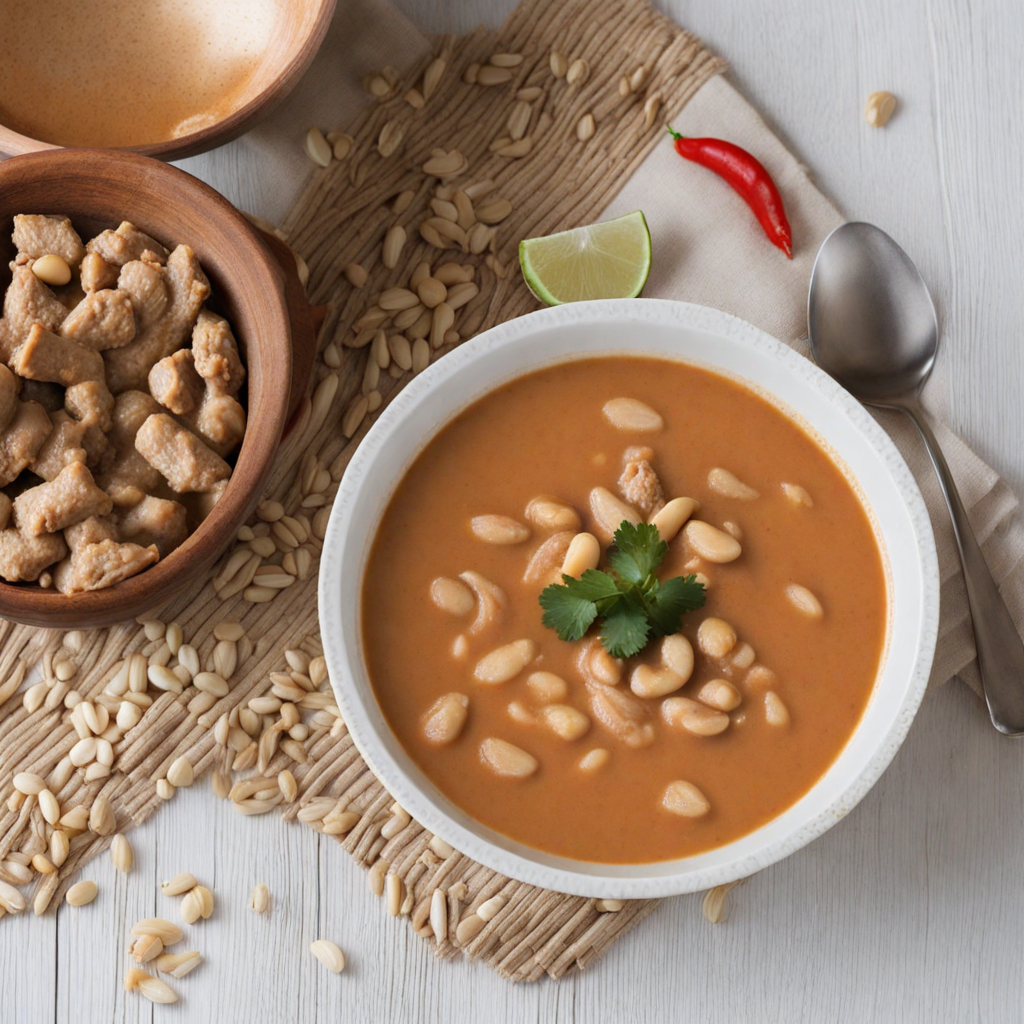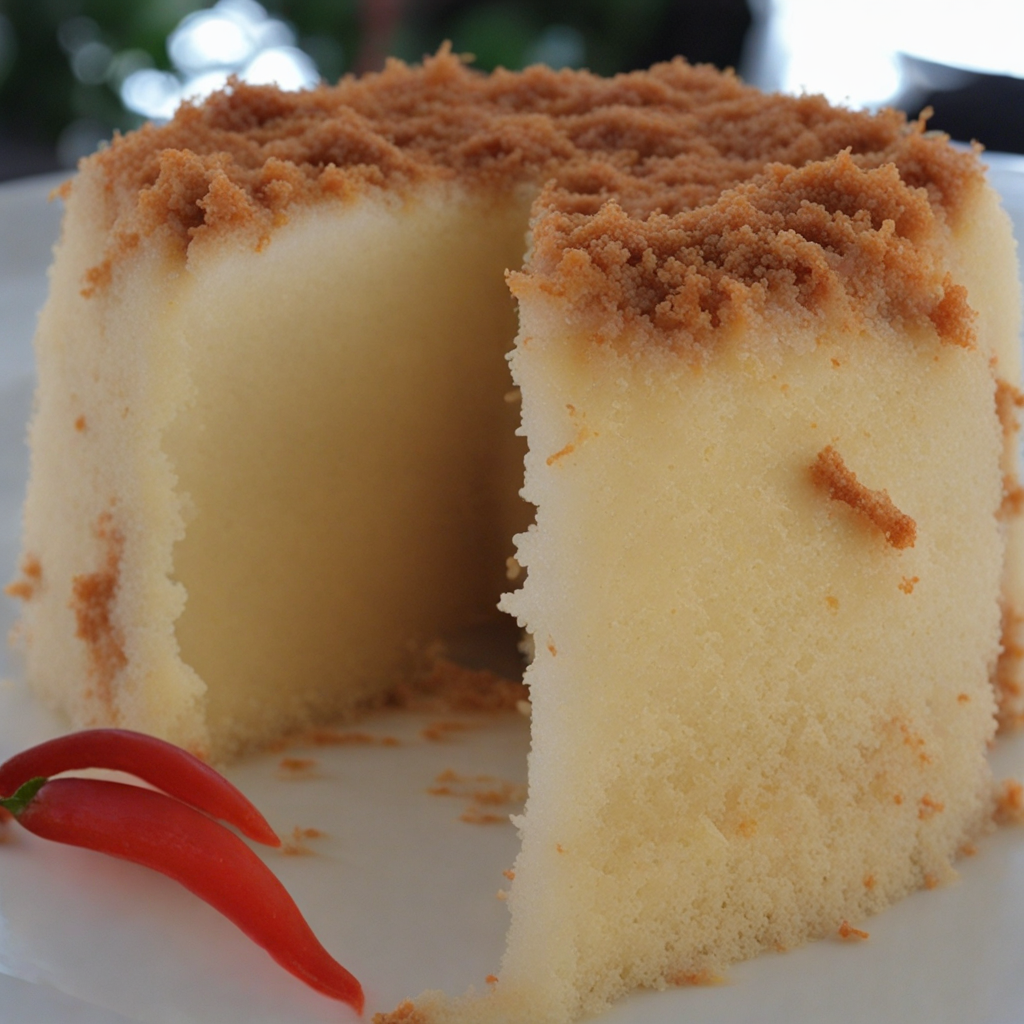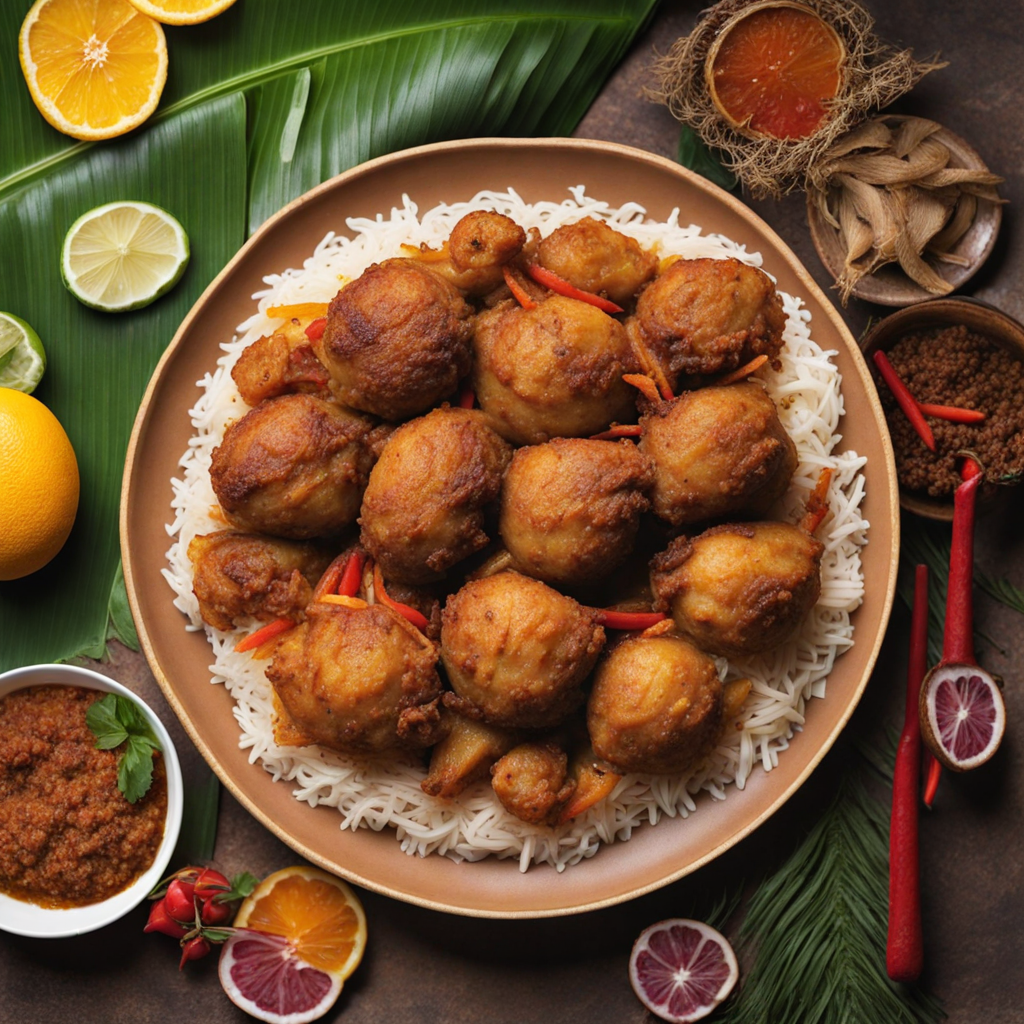Peanut Soup
Peanut Soup, a beloved dish from Suriname, is a creamy and hearty concoction that exemplifies the rich culinary traditions of this South American country. At its core, the soup is made from roasted peanuts, which are ground into a smooth paste that lends a nutty flavor and velvety texture. This base is then combined with a medley of fresh vegetables, such as onions, garlic, and tomatoes, creating a fragrant and flavorful broth. The addition of spices like cumin and coriander elevates the taste profile, making every spoonful a delightful experience that balances warmth and richness. What sets Surinamese Peanut Soup apart is its versatility; it can be enjoyed as a standalone meal or paired with rice or bread for a more filling option. Often, you may find it garnished with fresh herbs like cilantro or parsley, which add a burst of freshness that complements the deep, earthy notes of the peanuts. The soup can also be adapted to include various proteins, such as chicken or fish, enhancing its heartiness and making it suitable for different palates. The combination of textures and flavors makes it a comforting dish, perfect for warming up on a cool evening. The cultural significance of Peanut Soup in Suriname cannot be overlooked, as it embodies the country's diverse heritage, blending influences from Indigenous, African, and Dutch cuisines. This dish is often served during gatherings and celebrations, showcasing the communal aspect of Surinamese dining. As you savor Peanut Soup, you are not just tasting a meal; you are experiencing a fusion of histories and traditions that come together in one bowl, making it a truly unique culinary adventure.
How It Became This Dish
Pindasoep: A Culinary Journey Through Suriname’s History Pindasoep, or peanut soup, is a comforting dish that holds a special place in the culinary landscape of Suriname, a small but culturally rich country located on the northeastern coast of South America. The origins and evolution of this beloved soup reflect Suriname’s diverse cultural heritage, shaped by indigenous peoples, African slaves, Dutch colonists, and various immigrant communities. As we delve into the history of Pindasoep, we uncover not only the soup's ingredients and preparation but also its significance as a symbol of Surinamese identity and resilience. #### Origins and Ingredients The roots of Pindasoep can be traced back to the indigenous peoples of the region, who were among the first inhabitants of Suriname. They cultivated a variety of crops, including peanuts, which are believed to have been domesticated in South America thousands of years ago. The peanut, or ‘pinda’ in Dutch and Sranan Tongo, became a staple in the diet of various indigenous groups and eventually made its way into the broader culinary practices of Suriname. During the colonial era, particularly in the 17th century, the Dutch established plantations in Suriname, bringing enslaved Africans to work the fields. These enslaved communities introduced their own culinary techniques and flavors, infusing local ingredients with West African cooking traditions. The combination of peanuts with various vegetables, spices, and meats created a dish that was both nourishing and flavorful. The adaptation of Pindasoep reflects this intercultural exchange that is so characteristic of Suriname’s food history. The essential ingredients of Pindasoep are simple yet hearty: peanuts, vegetables, and meat. Traditionally, the soup is made with a base of ground peanuts, which provides a rich, creamy texture. Common vegetables used in the soup include carrots, sweet potatoes, and various greens. The addition of meat, often chicken or beef, elevates the dish, making it a complete meal. Seasonings such as garlic, onion, and sometimes hot pepper introduce layers of flavor, while local herbs contribute to the soup’s unique taste. #### Cultural Significance Pindasoep is more than just a dish; it is a cultural artifact that embodies the spirit of Suriname. The soup is often prepared for special occasions, family gatherings, or communal feasts, serving as a symbol of hospitality and togetherness. In Surinamese culture, food is a means of connection—between families, communities, and generations. Sharing a bowl of Pindasoep is an invitation to engage in conversation, storytelling, and the passing down of traditions. The soup’s significance also extends to the broader context of Suriname’s multicultural identity. With a population composed of various ethnic groups, including Maroons, Creoles, Javanese, Hindustanis, and Chinese, Pindasoep has been embraced by all as a unifying dish. Each community has contributed its own twist on the recipe, resulting in a rich tapestry of flavors and techniques. This adaptability highlights the importance of food as a medium for cultural exchange and integration. In Suriname, Pindasoep is often associated with the religious and cultural practices of the Afro-Surinamese communities. During important celebrations, such as the Day of the Maroons, the soup is prepared in large quantities to feed the gathered crowds, reinforcing the bond among participants. The act of cooking and sharing Pindasoep during such events serves as a reminder of the resilience and unity of a people who have faced and overcome tremendous challenges throughout history. #### Development Over Time As Suriname's society evolved, so did the preparation and consumption of Pindasoep. The 20th century saw significant changes in the country’s culinary landscape, influenced by urbanization, globalization, and migration. The introduction of new ingredients and cooking techniques transformed traditional recipes, making them more accessible to a wider audience. In urban areas, Pindasoep has become a staple in restaurants and street food stalls, where it is served alongside rice or bread. This shift reflects a broader trend of how traditional dishes adapt to modern lifestyles, catering to the busy lives of city dwellers while retaining their essence. The soup's popularity has also led to its inclusion in international gastronomy, where it is often celebrated for its rich flavors and nutritional value. Moreover, the global rise of interest in plant-based diets has brought renewed attention to Pindasoep. As a dish that is naturally rich in protein and healthy fats, the soup has gained popularity among health-conscious consumers. Many modern variations focus on enhancing the vegetarian or vegan aspects of the soup, showcasing the versatility of the peanut as a protein source. This adaptation not only preserves the traditional recipe but also allows it to resonate with contemporary dietary preferences. The digital age has further impacted the evolution of Pindasoep. Social media platforms have become spaces for food enthusiasts to share their recipes and experiences, promoting traditional dishes like Pindasoep to a global audience. Food bloggers and cultural ambassadors have played a significant role in showcasing Suriname's culinary heritage, encouraging people to explore and appreciate the unique flavors of this small yet vibrant country. #### Conclusion Pindasoep is more than just a comforting bowl of soup; it is a testament to Suriname’s rich and diverse history. From its indigenous roots and the influence of African and Asian culinary traditions to its modern adaptations, the soup embodies a narrative of resilience, unity, and cultural exchange. As Suriname continues to evolve, Pindasoep remains a cherished dish that connects the past with the present, offering a delicious taste of the country’s heritage to both locals and visitors alike. Whether enjoyed at a family gathering, a festive celebration, or a bustling street market, Pindasoep continues to nourish not only the body but also the soul, serving as a reminder of the power of food to bring people together across cultures and generations. In every spoonful lies a story—a story of survival, adaptation, and the enduring spirit of a nation.
You may like
Discover local flavors from Suriname






